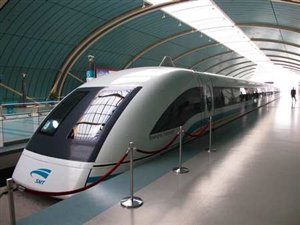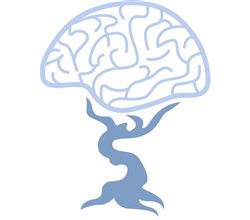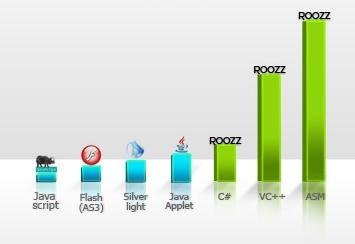 We continue our rotating Startupbootcamp blog series - our ten teams take turns sharing their thoughts and experiences on their Startupbootcamp adventure.
We continue our rotating Startupbootcamp blog series - our ten teams take turns sharing their thoughts and experiences on their Startupbootcamp adventure.
This entry is by Thomas Jam Pedersen of 3Djam.
Since ancient times, we humans have achieved mind blowing progress. This progress seems to follow the hockey stick curve, which is extremely difficult to grasp for us. Yet, the world around me often reminds me that there are a myriad of problems that we humans have not solved yet. Check out this video:
I believe what is stated here IS TRUE: We
are on a hockey stick curve and we will solve more problems and achieve bigger
things during the coming 20 years than we did during the last 1000 years! Intro
Google Goggles
Today I tried Google Goggles, which is an image analysis application for Android mobile phones, which allows you to take a picture, which it then analyses for you and helps you find stuff on the web related to what is in the image. Today, it works best with text and logos. You can take a picture of a book, DVD etc and find it on the web, however Google is working on making it better, such that it can find people on the web if you photograph their face. Or you can take a picture of your empty product packaging before you throw it out and your phone will let you order a new one with only 2 – 3 clicks. No need to implement scanners and computers in your fridge, like we talked about just a few years ago. In addition to this, Google can also help you shop cheaper and greener, more sustainable and more healthy. At restaurants you can take photos of the menu and of your food and give feedback and rate the food and service. This way the web will have realtime updated statistics, menu and price-information from every restaurant in the world. When you walk by a restaurant you can take a picture of the restaurant and Google will show you pictures of their dishes, ratings, pricing, etc. Google may even suggest another restaurant in the neighbourhood in the same price range but with better ratings. And few years from now, Google may even relate this to other restaurants and dishes you your self have had recently. Naturally, this works not only for restaurants but really in most industries.
What it really is all about is saving time on things you don’t care about such that you can spend more time on the things you are passionate about. Just a few tabs on your phones touch screen and it has helped you select, order as well as pay fpr products and services, which with high probability is the exact product you would have selected if you have had more time to go into details. I am not arguing that we will use this for everything. In the beginning, only a small fraction of the population will use it for a few types of products, however in 10 – 20 years from now, the majority of us will use this us select and order the majority of all the products that we buy in a typical everyday life. http://www.youtube.com/watch?v=Hhgfz0zPmH4
A few months ago my wife and I spent well over 30 hours looking for a summer holiday for our family. I would gladly have paid US$ 100 if someone had offered me the possibility of typing in my priorities and budget and a system would have spit out several alternative packages for me. From experience I know that I would not be able to come up with a significantly better list myself by researching for 30+ hours. And what if those results had had user ratings and maybe even links to people in my network that had been there, whom I could contact to get a more personal introduction / rating / feedback ? As an examples of how this market is developing, four of the teams in Startupbootcamp.dk actually work with rating of products and services…
Feedback Production
This brings me to my next subject: Feedback Production. Today most products are mass produced. Typically a company designs a product or collection. They then get bids from factories and subcontractors, place a big first order and maybe 12 – 18 months after the planning has started, the products hit the stores at which time planning of the next product has already started. This is very risky, because it is difficult to predict this many months ahead what customers want, what other competitors will supply, production cost, costs of raw material etc etc.
Due to this big risk it is very difficult and very expensive to raise money for a new unproven product. Should a new product become a big success it is very expensive and often impossible to scale up a mass production and supply. It is all inherited in the way we manufacture and invent products today. If you want to bring something new to the market, you have to start in the small and build it up slowly. Thus it is very difficult to make any revolution - you can really only make evolutions. Since patents do not work for most products it makes it very risky to be first movers.
This is why progress and invention has been so slow in the past however I believe this could very likely change fundamentally over the coming decade.
What is different now is that IT will help designers get very rapid and accurate feedback from customers, through channels such as Google Goggles, Facebook and Twitter. We will see new types of production lines, where scaling of production is much more flexible and shipment to the store is less than a month. Thus designers can make small series of products with a lot less risk. As soon as the first 1000 units hit the stores they can get the feedback from customers and change the product accordingly and adjust the production capacity accordingly. Thus we will start to see products that change not every year but every 2 – 4 weeks. It will be much easier for designers to order more production capacity for block buster products in a very short time.
For us working in IT this is great news since this requires a lot of new IT infrastructure and this is what the majority of us will build during the next 10 years. In 20 years from now it will involve very little risk to bring a new product to market of the sort that do not require a huge R & D effort. Cost of those first series will be very small and it can scale fast. If you can keep the feedback away from competitors then you win the race for this new type of products. The winner will be the company that can manage the shortest loop from feedback to the next generation of adjusted products. The feedback production paradigm is coming soon and it is going to remove the risk significantly and speed up production evolution and revolution cycles drastically.
China Raw Material and Fast Trains
Did you know that China is the country in the world with the fastest trains? Did you know that they acquired this technology after working with companies like Siemens, French TGV and a Japanese company while building a railroad for the Olympics in 2008. When the economic crisis hit in end of 2008, the Chinese government decided to build a huge number of high speed railroads connecting all the big cities in China. Instead of investing in help packages in the bank sector they invested in infrastructure and jobs.

At the same time, they also invested US$30 billion in a factory to build passenger jets to compete with Airbus and Boing. Rest assured, that within the next 10-15 years they will be a worthy competitor to those two old giants.
Did you also know that the Chinese Government has announced that they will build a high speed railroad from Beijing to London before 2020. Upon hearing this my first reaction was “why ??” My next reaction was “can they really do that?” Then I wondered who actually would be the customers and finally how they could possibly make agreement with the countries which this railroad will pass through. It is planned to run average 320 Km / hour and cross 17 countries.
After some research on the topic and thinking a little more about it, I realized that this railroad is not for passengers. It is for shipping products from China to Europe very fast for the feedback production era. To get raw materials like oil, iron, steel, cobber, lithium, etc into China fast. The Chinese government realized that what is most important to sustain their growth over the next 10 – 20 years is to get the raw materials they need and do so a very predictable rate and price. Most of the countries that have these raw materials are actually some of the 17 countries on the planned line between Europe and China. None of these countries has the technical, economical or political strength to build the world fastest railroad and connect their respective countries with 2 or 3 of the most powerful regions in the world. So China figured that if they offer to build such a railroad through these poor countries at no initial cost, they could probably get a good long term deal on raw materials. Thus over the next 10 years China are going to send a million railroad workers out to build this link. Basically the do what the Europeans did ruthlessly 200 years ago to conquer the world. Exchange technological advantages for world dominance. China wants to be READY for the feedback production era.
Another mindset

Staying on the topic of China, another thing that strikes me as very important is the mindset among successful young Chinese. Throughout their entire life they have experienced very rapid growth. In the west we have a mindset that everything changes very slowly. The only industry where we really expect rapid growth is in the silicon industry, where we have learned to expect doubling of processing power and storage capacity every 18 month. This is a fundamental part of our mindset and most of our actions and inventions are tightly coupled with this relation. In China the young generation has a mindset that they can expect enormous changes in almost all areas of the society within a decade. What is even more important - contrary to the Western world – is that it is less likely that new ideas get rejected because peers and investors don’t believe in them. In China there is an atmosphere where everyone believes in big changes within the next decade and they admire those who push these changes forward. I think this atmosphere will drive many other industries into rapid growth similar to what we know in the silicon industry and consequently China will become the leader in most of these industries!!
About 5 years ago I started to realize some of those things I have described above and what enormous progress we humans can make when everything get connected. I decided that I wanted to use my skills and my life to do what I can to contribute to this venture. I am a software engineer and I fully believe that software is the most important tool we humans have to build such complex systems and solve complex problems.
Having decided that I wanted to contribute, I asked myself where I should start and realised it should be
a) Today the majority of hours spend on software development are spent on stuff that could be solved or reduced by more than 50% if we had better tools.
b) The consumers of software could also save more than 50% of their time if it was easier to discover and consume software. And if that software was faster in general, so that we could reduce all the million of seconds each year end users wait for the computer to respond.
I Have Dreams
 1.) In my dreams,
consuming software should be like watching a video on YouTube:
1.) In my dreams,
consuming software should be like watching a video on YouTube:
- Easy to find what you are looking for. (shows ratings and number of views)
- When you click on a link, it starts to play after a few seconds of download
- It is easy to find other videos about the same topic
- I can give feedback and have a discussion with other viewers and the author.
2.) In my dreams, publishing software on the Internet should as easy as publishing articles on Wikipedia. The initial creator put it online and others help correct it and review it to make it more perfect. Having this open review creates trust for those that only consume it.
3.) In my dreams, most errors in software can be automatically fixed, if the end user tells the system where the error occurred and how the application should have reacted, to give the correct result.
4.) In my dreams, end users would be able to rent games and applications by the hour or day and the license agreements of most software should be standardized.
5.) In my dreams, I am thinking how great it would be if someone could create a platform that would do all of the above and which would not require software applications to be rewritten to run on that platform. Would it not be great if the majority of software could just be converted to run on such a platform without changing the source code at all and without taking any performance hit at all?
6.) In my dreams, I wish that this dream platform would also have strong built-in copyright protection and make it safe for the end users to run software.
When I Wake Up
When I wake up, I wander the streets of Copenhagen thinking that it would be much easier to discover and consume software if my dream platform existed, and how much easier it would be for software developers to make money and create new and better software in super fast loops.
Enough said: It is time to stop dreaming and instead support a small start-up team of 3 who are part of the Startupbootcamp, and actually creating a platform that will allow all of the above to happen. It is the Roozz platform, which makes it possible to run applications directly in the webpage very similar to the way you view a video in the webpage today.
Of course it also supports cross platform software development and allow full hardware access including high speed 3D graphics.
What is the really great thing about the Roozz Technology is that it actually doesn’t force software developers to use a specific programming language. They can use the programming language and tools that they already know well and there is no learning curve to get your application on the Roozz platform.
We have a humble hope that the Roozz Platform will help scale software development and consumption to the trillions notes as we saw in the first video, simply by making it much easier and less time consuming to find and use software and to help you reach your personal goals – whether those are buying a customized product or inventing the next “computer mouse”.
We strongly believe that the types of changes that we have talked about in this blog will come. We also believe that the key technology, which will drive these change, is software. This is why making it easier to develop, discover and consume software is very essential to the speed of evolution towards making the world a better place. We hope that the Roozz Plaform will help bring better software tools to you such that you can excel in the things that you are passionate about. We believe that is the best way to contribute to a better world.
 Please give us your
support, subscribe to our streams:
Please give us your
support, subscribe to our streams:

 Bliv gratis medlem
Bliv gratis medlem


